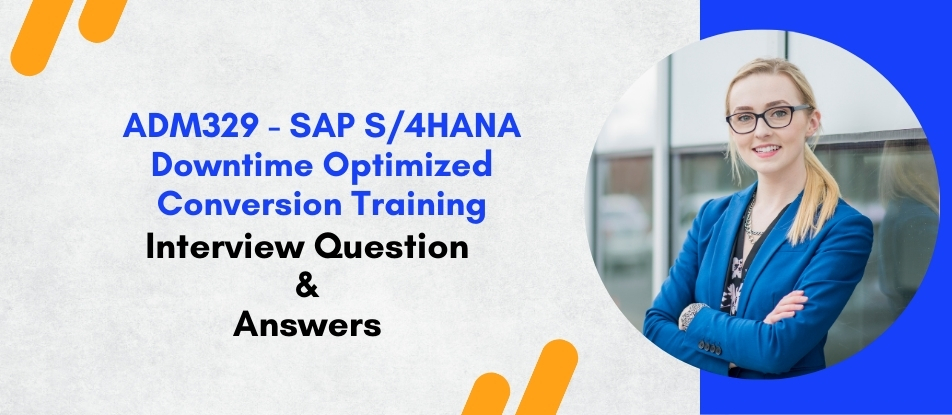
The SAP S/4HANA Downtime Optimized Conversion (ADM329) training equips professionals with expertise to minimize downtime during migration from SAP ECC to S/4HANA. Covering system preparation, SUM with downtime-optimized options, delta data handling, and shadow system usage, it enables learners to plan and execute conversions with reduced business impact. The course highlights key prerequisites, risk management, testing cycles, and performance considerations. Ideal for administrators, consultants, and project managers, it ensures a smooth transition to S/4HANA with improved efficiency and continuity.
ADM329 SAP S/4HANA Downtime Optimized Conversion Training Interview Questions Answers - For Intermediate
1. What is the primary objective of Downtime Optimized Conversion (DOC)?
The primary objective of DOC is to minimize business downtime during a system conversion from SAP ECC to SAP S/4HANA. By executing the majority of time-consuming migration activities during system uptime and leaving only critical delta and technical activities for the downtime window, it ensures that organizations can transition with minimal business disruption.
2. How does DOC support large database sizes during conversion?
DOC supports large databases by allowing the bulk of data migration to occur in the uptime phase. This avoids having to move massive amounts of data during the actual downtime. Only delta changes are processed later, which makes DOC particularly effective for enterprises with very large datasets where downtime tolerance is low.
3. What are the hardware considerations for DOC?
DOC requires robust hardware infrastructure to manage parallel data migrations, especially during uptime. Adequate memory, CPU capacity, and optimized HANA database configurations are crucial. Without sufficient resources, migration speed may slow down, which could impact both uptime operations and final downtime reduction.
4. How does the Maintenance Planner assist in DOC?
The Maintenance Planner is used to analyze the system landscape and check compatibility for conversion. It provides guidance on add-ons, business functions, and system requirements. For DOC, it ensures that the system environment is prepared properly, avoiding delays or failures during SUM execution.
5. What role does the SAP Readiness Check play before DOC?
The SAP Readiness Check evaluates system readiness by analyzing simplification items, custom code, add-ons, and business process impacts. For DOC, it helps identify potential blockers early, ensuring that technical and functional prerequisites are addressed before the actual conversion project begins.
6. How does DOC utilize nZDM technology?
Near-Zero Downtime (nZDM) technology enables the transfer of large data volumes while the system remains available. It works by replicating data in the background and logging changes for later synchronization. DOC leverages this technology to ensure that only incremental changes are migrated during downtime, significantly reducing cutover duration.
7. What is the difference between downtime optimized and near-zero downtime conversion?
Downtime Optimized Conversion (DOC) reduces downtime significantly but does not eliminate it completely. Near-Zero Downtime Conversion (nZDMC), on the other hand, almost eliminates downtime by running a parallel clone system and switching over. DOC is simpler and more widely applicable, while nZDMC is used for extremely critical systems.
8. What impact does DOC have on business cutover planning?
Cutover planning becomes more streamlined since most of the migration activities are already completed before downtime starts. This reduces risks of extended outages and provides greater confidence in scheduling business cutovers. However, planning must still account for delta migration and final validations during the reduced downtime window.
9. How are add-ons handled during DOC?
Add-ons must be validated for compatibility with S/4HANA through the Maintenance Planner. Unsupported or obsolete add-ons need to be removed or replaced. DOC does not change this requirement, but it emphasizes the need for handling add-ons early, as there is less room to address unexpected issues during the short downtime phase.
10. What testing strategies are critical for DOC success?
Key testing strategies include multiple dry runs in sandbox and quality systems, end-to-end business process validation, custom code remediation checks, and stress testing of the SUM with DOC option. Repeated testing ensures that uptime migration activities are stable and downtime can be reliably minimized.
11. How does DOC improve user experience during migration?
Since the system remains largely available during uptime, users experience minimal disruption while data migration takes place. This allows daily business operations to continue as normal. The only noticeable downtime is during the shorter cutover period, which is much easier to accommodate in scheduling.
12. What are common challenges faced during DOC projects?
Challenges include managing delta changes effectively, ensuring sufficient hardware performance, handling incompatible add-ons, and mitigating risks from custom code issues. Additionally, the complexity of planning and testing multiple DOC cycles can increase project timelines if not carefully managed.
13. How does DOC handle large transactional tables?
Large transactional tables, such as BKPF or BSEG, are migrated during uptime using parallel processing and replication mechanisms. Only the new transactions created after the initial migration are processed during downtime. This ensures that even large tables do not significantly impact the final downtime.
14. What is the role of SUM phases in DOC?
SUM phases are adjusted to separate uptime and downtime activities. Phases like data export and import, schema migration, and table conversion are largely shifted to uptime. Only final synchronization, technical checks, and system cutover remain for downtime phases, making SUM central to the DOC process.
15. Why is DOC considered a strategic option for S/4HANA transformation?
DOC is strategic because it addresses one of the biggest concerns in system conversions—extended business downtime. By enabling large enterprises to migrate with minimal disruption, it accelerates S/4HANA adoption, supports global operations with high availability needs, and ensures smoother digital transformation without major interruptions to business continuity.
ADM329 SAP S/4HANA Downtime Optimized Conversion Training Interview Questions Answers - For Advanced
1. How does Downtime Optimized Conversion balance system resource utilization during uptime activities?
During uptime activities, DOC must ensure that critical business operations are not impacted while large-scale data migrations occur in the background. SUM achieves this by using adaptive resource allocation, parallel processing threads, and workload throttling to control CPU and memory consumption. The tool dynamically adjusts migration intensity to balance system performance, allowing core processes like order entry, finance postings, or reporting to continue uninterrupted. System administrators also monitor utilization through SAP Solution Manager or monitoring dashboards to fine-tune resource parameters in real time. This balance is vital because any degradation in system performance during uptime could undermine user confidence and business continuity, even if downtime is reduced.
2. Why is multiple-cycle testing essential in DOC projects, and what does each cycle aim to validate?
Multiple-cycle testing is essential in DOC projects because the complexity of separating uptime and downtime activities introduces more moving parts compared to a traditional conversion. The first cycles typically validate basic technical feasibility, identifying add-on issues, simplification items, and database migration performance. Later cycles focus on functional validation, ensuring business processes run normally while uptime migration occurs. Pre-production cycles simulate the actual cutover window, measuring how long delta migrations and technical downtime activities will take. Each cycle provides valuable timing benchmarks, allowing project teams to refine cutover plans and identify risks before the productive migration. Without multiple cycles, unforeseen issues could lead to downtime overruns or system inconsistencies.
3. How does SUM manage shadow system creation in the DOC process?
Shadow system creation is a central feature of SUM in DOC. SUM sets up a shadow repository and database structures that mirror the production system. This shadow environment is used to perform table conversions, apply upgrades, and prepare technical changes without disrupting ongoing business operations. As the shadow system is built in parallel, most heavy tasks—like repository adjustments or large data exports—can be completed while users continue working in the live environment. Once the downtime window begins, SUM switches from the live system to the already-prepared shadow system, reducing the number of steps left to perform. This architecture is what enables DOC to shorten downtime dramatically.
4. In what way does data archiving influence downtime optimization?
Data archiving plays a critical role in downtime optimization by reducing the overall volume of data that needs to be migrated. Large volumes of historical or redundant data can become significant downtime drivers if not addressed before conversion. By implementing a robust archiving strategy, enterprises can migrate only relevant, active data, while still preserving compliance and audit requirements. In DOC projects, archiving is often executed as a preparatory step months before conversion to ensure that uptime migration runs efficiently and does not overwhelm system resources. This strategy is particularly important for organizations with multi-decade data footprints in modules like Finance or Logistics.
5. How are business-critical interfaces validated during DOC?
Interfaces with third-party systems, legacy applications, and external partners are often business-critical and must be validated thoroughly during DOC projects. Validation includes ensuring that middleware such as PI/PO or third-party connectors function correctly after the S/4HANA upgrade. Testing strategies involve end-to-end data exchange, performance monitoring under load, and verification of real-time synchronization with partner systems. Since downtime is limited, post-cutover issues in interfaces can be disruptive and difficult to fix on short notice. For this reason, comprehensive interface testing and coordination with external vendors are essential parts of DOC planning and rehearsal.
6. What role does simplification item management play in DOC projects?
Simplification items represent functional changes in SAP S/4HANA that may affect processes, data models, or custom code. Effective management of simplification items is crucial in DOC projects because unresolved items can lead to failures during conversion. Tools like the Simplification Item Catalog and SAP Readiness Check help identify which business processes are affected. Project teams must analyze each item, decide whether remediation or redesign is required, and implement the necessary changes before the conversion. Since downtime is short in DOC, unresolved simplification items cannot be handled during cutover, making proactive remediation essential.
7. How does DOC address potential performance bottlenecks during delta migration?
Delta migration can create performance bottlenecks if a large number of business transactions are logged between initial uptime migration and the downtime window. SUM addresses this by using optimized delta capture mechanisms, parallel processing, and intelligent scheduling of synchronization tasks. Organizations can also plan their cutover windows during periods of low transactional activity, such as weekends or off-peak hours, to reduce the volume of deltas. In cases where delta migration performance is still a concern, business teams may temporarily limit high-volume batch jobs to keep deltas manageable. These strategies ensure that delta migration does not extend downtime beyond acceptable thresholds.
8. What strategies are used to handle industry-specific solutions in DOC?
Industry-specific solutions like IS-Oil, IS-Utilities, or IS-Retail add complexity to DOC because they often involve large specialized tables, unique transactions, and specific add-ons. Strategies to handle them include validating compatibility through the Maintenance Planner, upgrading to supported versions, and conducting specialized testing scenarios that replicate industry-specific processes. In some cases, SAP provides targeted OSS notes or correction packages for industry solutions during DOC projects. Engaging SAP industry experts early in the planning phase is a best practice to avoid last-minute issues that could extend downtime or disrupt mission-critical processes.
9. How does project governance change in a DOC-based conversion compared to a traditional conversion?
Project governance in DOC conversions must be more rigorous due to the compressed nature of the downtime phase. Steering committees are established with clear escalation paths to make rapid decisions during cutover. Governance also emphasizes stronger collaboration between technical and functional teams, as both uptime and downtime tasks must align seamlessly. More stakeholders are involved in rehearsals and validation cycles, ensuring that every aspect of the cutover is documented and rehearsed. Continuous risk assessments, checkpoint reviews, and readiness gates become integral to governance. In comparison, traditional conversions allow more flexibility during downtime, whereas DOC demands precision and discipline at every stage.
10. What role does Solution Manager play in monitoring DOC?
SAP Solution Manager provides real-time monitoring and orchestration support during DOC. It enables teams to track migration progress, monitor system performance, and validate data consistency. In addition, Solution Manager’s test suite integrates with business process documentation to ensure automated test execution during DOC rehearsals. Its role extends into cutover execution by providing dashboards that show status of uptime and downtime activities, allowing project managers to make data-driven decisions in real time. This visibility is critical to ensuring that downtime reduction targets are achieved without sacrificing stability or performance.
11. How are fallback strategies designed for DOC projects?
Fallback strategies are crucial in DOC because of the compressed downtime. Typically, organizations create full system backups before initiating downtime activities, allowing them to restore the system to its pre-conversion state if critical issues arise. In addition, checkpoint-based recovery within SUM enables partial rollbacks in case of errors during specific phases. Governance structures ensure that fallback decision-making is pre-defined, with clear criteria for when to abort and roll back. Since fallback can itself be time-consuming, these strategies are designed to balance risk management with downtime constraints, ensuring business continuity even in worst-case scenarios.
12. How does DOC improve ROI for S/4HANA transformations?
DOC improves ROI by reducing the indirect costs associated with extended downtime, such as lost sales, disrupted customer service, and operational inefficiencies. By allowing businesses to remain largely operational during migration, DOC ensures that revenue streams continue uninterrupted. It also reduces project risk, which translates into lower contingency costs. Additionally, the accelerated adoption of S/4HANA enables enterprises to start leveraging innovations like embedded analytics and process automation earlier, increasing business value sooner. When compared to traditional conversions, DOC reduces both tangible and intangible costs, delivering a stronger overall return on investment for transformation initiatives.
13. How is data consistency validated after DOC cutover?
Data consistency is validated using a combination of automated and manual checks. SUM provides consistency validation reports comparing source and target data volumes, ensuring that no records are missed during delta migration. Business teams perform transactional tests on critical processes, such as financial postings or order management, to validate end-to-end data integrity. In some cases, reconciliation reports between ECC and S/4HANA environments are executed to confirm balances, open items, and master data accuracy. These validations are mandatory because even minor inconsistencies could lead to compliance issues or reporting inaccuracies in the post-go-live system.
14. How does DOC align with SAP’s overall cloud strategy?
DOC aligns with SAP’s cloud strategy by enabling smoother, faster migrations to S/4HANA, which is increasingly offered as a cloud-hosted solution. By minimizing downtime, DOC makes it more feasible for enterprises to adopt cloud-based S/4HANA environments without disrupting operations. Furthermore, many DOC best practices—such as modular migrations, background data transfers, and automated validation—mirror the strategies used in cloud-based system transformations. As enterprises move toward hybrid and multi-cloud ERP landscapes, DOC provides a foundation for minimizing disruption in both on-premises and cloud scenarios, directly supporting SAP’s vision of cloud-first digital transformation.
15. Why is DOC considered a cultural as well as a technical transformation in enterprises?
DOC is not just a technical method but also a cultural shift in how enterprises approach ERP transformations. Traditionally, organizations prepared for long outages and accepted downtime as an unavoidable cost of migration. DOC challenges this mindset by demanding precise planning, strong collaboration, and continuous testing, thereby fostering a culture of discipline and cross-functional alignment. Business and IT teams must work together more closely than in past conversions, creating shared ownership of transformation outcomes. This cultural change extends beyond the project itself, embedding practices of agility, risk management, and operational excellence that serve enterprises in future digital initiatives.
Course Schedule
| Dec, 2025 | Weekdays | Mon-Fri | Enquire Now |
| Weekend | Sat-Sun | Enquire Now | |
| Jan, 2026 | Weekdays | Mon-Fri | Enquire Now |
| Weekend | Sat-Sun | Enquire Now |
Related Courses
Related Articles
- IBM AS/400: A Timeless Enterprise Computing Platform
- Benefits of Using CAESAR II for Piping Design and Analysis
- Microsoft SQL Server 2012 Certification Training Benefits
- What is the difference between SAP APO and SAP IBP? - SAP IBP Online Training Course
- The Impact of SmartPlant SpoolGen on the Piping Industry
Related Interview
- Palantir Foundry Data Science Interview Questions Answers
- AVEVA ERM Training Interview Questions Answers
- SAP Integrated Business Planning (IBP) - Interview Question Answers
- AZ-104: Microsoft Azure Administrator Interview Questions Answers
- SAP Condition Contract Management Training Interview Questions Answers
Related FAQ's
- Instructor-led Live Online Interactive Training
- Project Based Customized Learning
- Fast Track Training Program
- Self-paced learning
- In one-on-one training, you have the flexibility to choose the days, timings, and duration according to your preferences.
- We create a personalized training calendar based on your chosen schedule.
- Complete Live Online Interactive Training of the Course
- After Training Recorded Videos
- Session-wise Learning Material and notes for lifetime
- Practical & Assignments exercises
- Global Course Completion Certificate
- 24x7 after Training Support

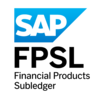



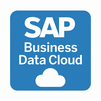
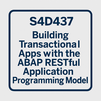
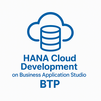
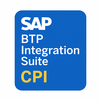


 Join our Live Instructor-Led online classes delivered by industry experts
Join our Live Instructor-Led online classes delivered by industry experts